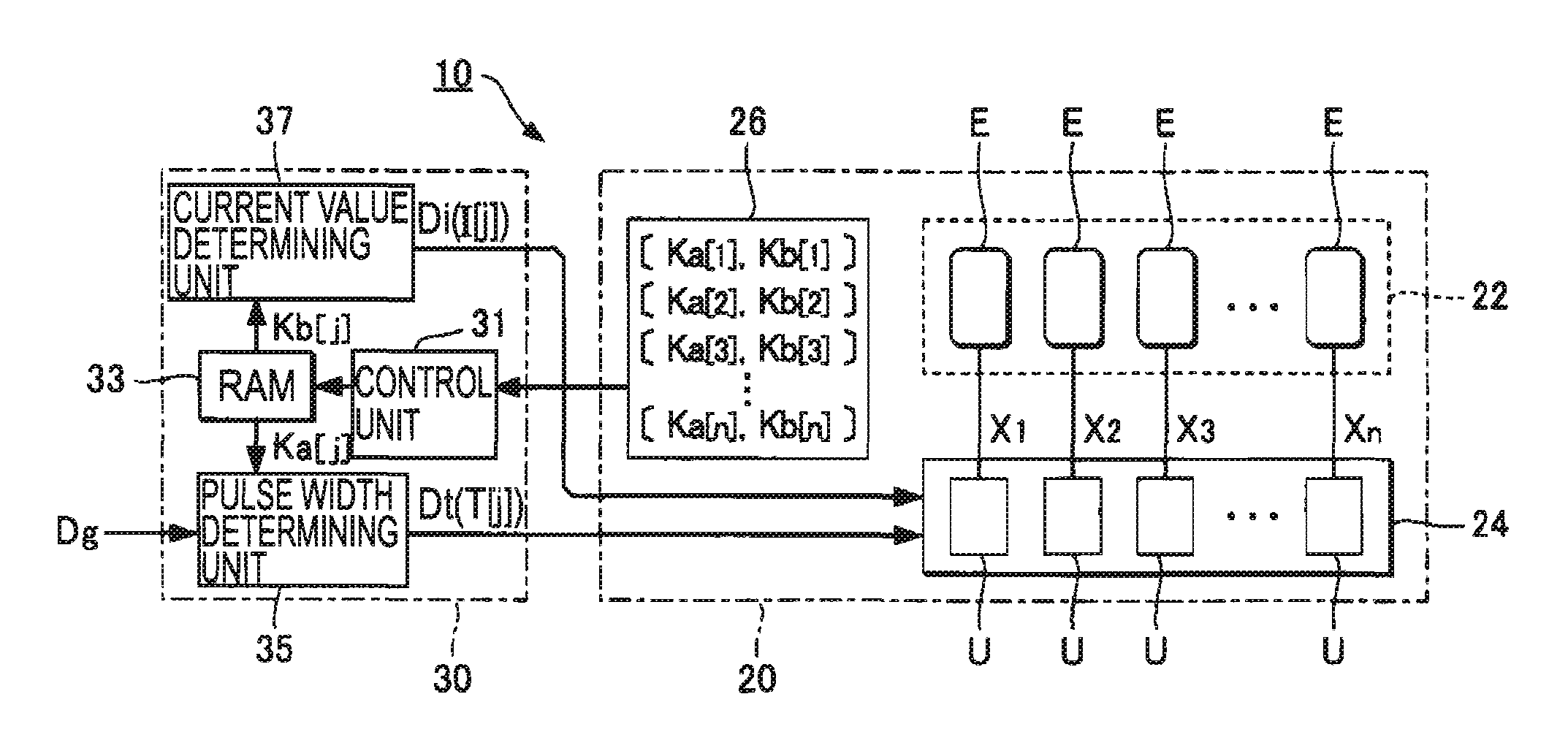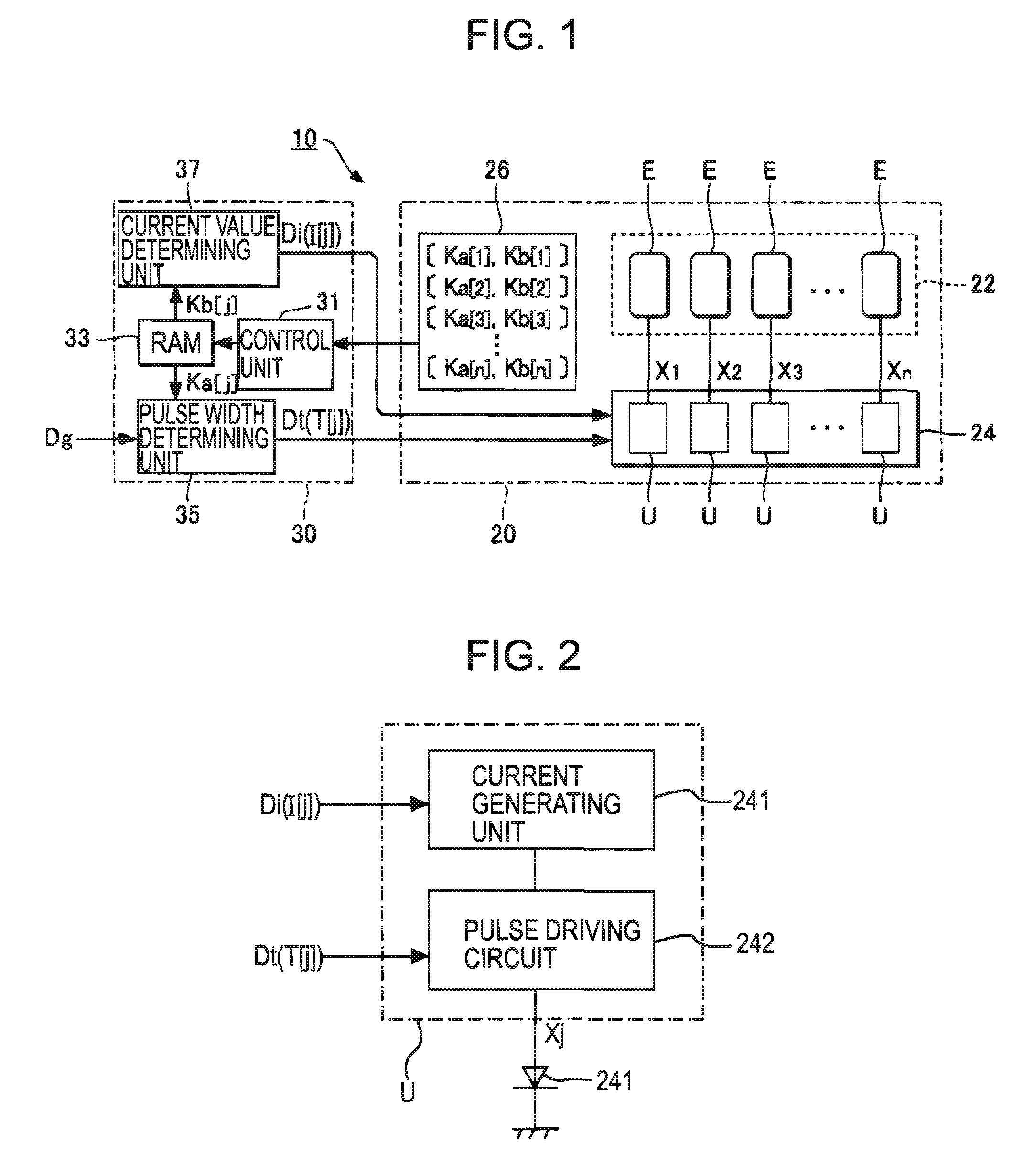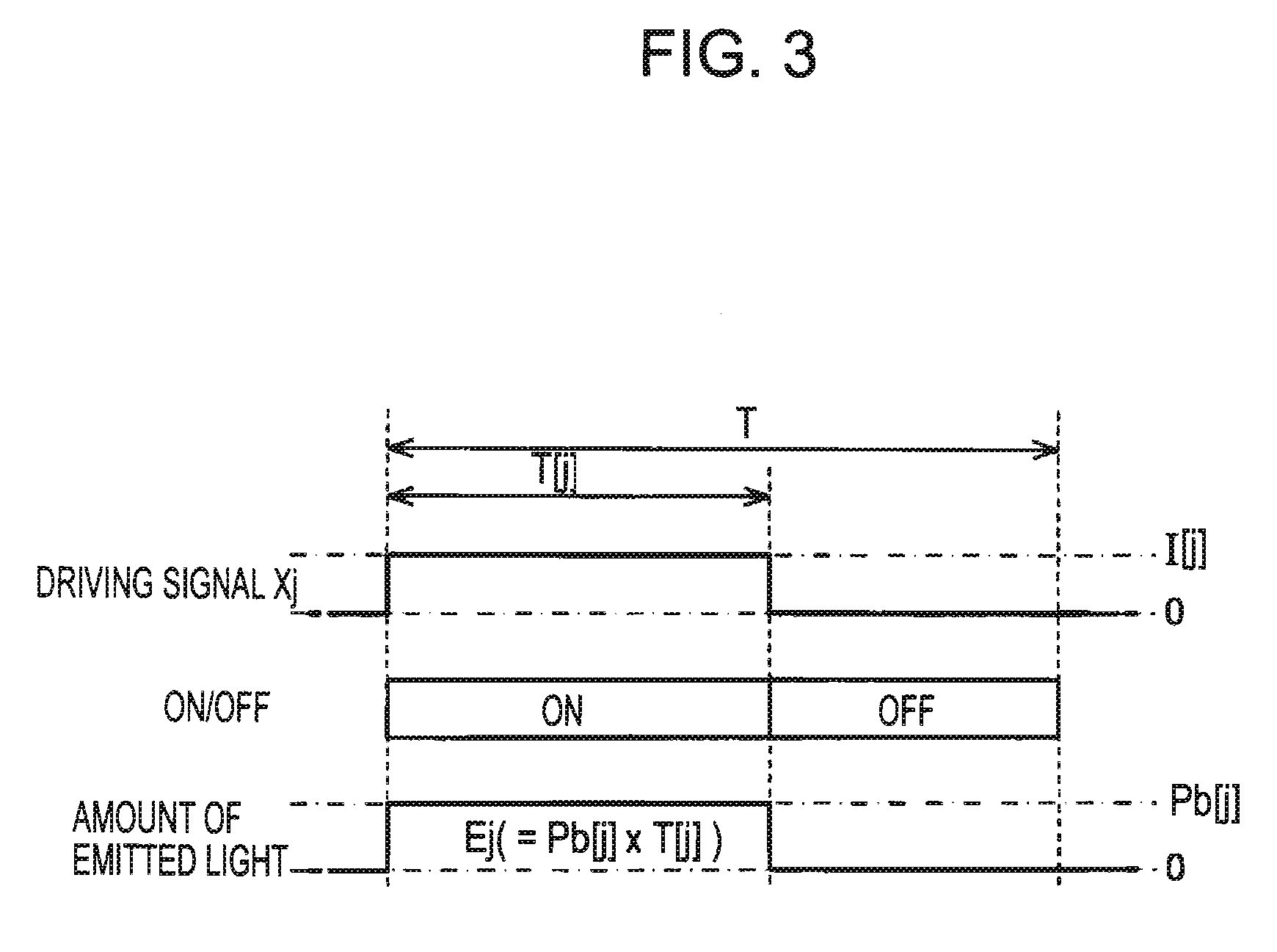Light-emitting device, driving circuit, driving method, and electronic apparatus
a technology of light-emitting devices and driving circuits, applied in static indicating devices, instruments, printing, etc., can solve problems such as brightness variation caused by errors (deviations) in the characteristics of individual light-emitting elements, and achieve the effect of preventing a variation in the brightness (grayscale value) of a light-emitting elemen
- Summary
- Abstract
- Description
- Claims
- Application Information
AI Technical Summary
Benefits of technology
Problems solved by technology
Method used
Image
Examples
first modification
[0064] In the above-mentioned embodiment, the storage device 26 for storing the correction coefficients Ka[j] and Kb[j] is provided in the head module 20. However, the position where the storage device 26 is provided may be appropriately changed. For example, the storage device 26 may be built in the controller 30. The correction coefficient Ka[j] or Kb[j] is a numeral value depending on the characteristics of each light-emitting element E. Therefore, when producing the light-emitting device 10 including the controllers 30 with the built-in storage device 26 in large quantities, it is required to strictly manage the correspondence between the head module 20 and the controller 30 for every light-emitting device 10. In contrast, in the embodiment of FIG. 1, the storage device 26 is provided together with the light-emitting unit 22 in the head module 20. Therefore, even when the characteristics of the individual light-emitting elements E are different from one another for every light-e...
second modification
[0065] In the above-mentioned embodiment and the first modification, the controller 30 sets the pulse width T[j] and the current value I[j] according to the correction coefficients (Ka[j] and Kb[j]). However, at least one of the pulse width T[j] and the current value I[j] may be set by the head module 20. For example, the pulse width T[j] according to th-e correction coefficient Ka[j] is computed by the controller 30, and the current value I[j] according to the correction coefficient Kb[j] is determined by the head module 20. However, in the invention, it is not indispensable to separately configure the head module 20 and the controller 30. For example, a circuit having the same effects and functions as the controller shown in FIG. 1 may be provided in the head module 20.
third modification
[0066] The method of setting the pulse width T[j] on the basis of the correction coefficient Ka[j] and the method of setting the current value I[j] on the basis of the correction coefficient Kb[j] are not limited to the above-mentioned embodiments and modifications. In the above-mentioned embodiments and modifications, the pulse width T[j] is computed by multiplying the grayscale value of the grayscale data Dg by the correction coefficient Ka[j]. However, the pulse width T[j] may be computed by other computations. Further, in the above-mentioned embodiments and modifications, the correction coefficient Ka[j] of Equation 8a is stored in the storage device 20. However, the pulse width T[j] of Equation 7a may be stored in the storage device 26. In this construction, the pulse width determining unit 35 determines the pulse width T[j] of the driving signal Xj by adjusting the pulse width Tb[j] read from the storage device 26 on the basis of the grayscale data Dg. Furthermore, the peak li...
PUM
 Login to View More
Login to View More Abstract
Description
Claims
Application Information
 Login to View More
Login to View More - R&D
- Intellectual Property
- Life Sciences
- Materials
- Tech Scout
- Unparalleled Data Quality
- Higher Quality Content
- 60% Fewer Hallucinations
Browse by: Latest US Patents, China's latest patents, Technical Efficacy Thesaurus, Application Domain, Technology Topic, Popular Technical Reports.
© 2025 PatSnap. All rights reserved.Legal|Privacy policy|Modern Slavery Act Transparency Statement|Sitemap|About US| Contact US: help@patsnap.com



